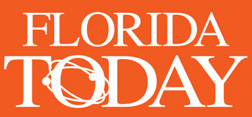![]()
HOME------FICTION------NON-FICTION------LOCALS------ABOUT![]()

Politicians Using the Lagoon as a Red Herring
published by Florida Today - August 20, 2018
A few months ago, Brevard County Commissioner John Tobia attempted to cut funding to a number of pre-approved capital projects –– a nature center, a campground, a museum, a sporting arena, and a park –– condemning this allocation of money as "unconscionable" in light of the ongoing pollution issues in the Indian River Lagoon.
"This is about priorities," Tobia said, attempting to position himself as an arbiter of wise spending. When Tobia's resolutions were struck down, Florida Rep. Randy Fine speculated that Brevard County might not be worthy of resources from the state, as the Brevard County Commission could not prove, to his mind, that it was spending its own funds wisely enough. Fiscal responsibility demands an intimacy with numbers, so community-minded legislators such as Fine and Tobia must be familiar with these: In 2016, House and Senate races cost over $271 million in Florida. Local county and city races spent an additional $1.2 million. Factor in the population of Brevard as a percentage of the $2.4 billion presidential contest, and we can extrapolate a figure of $13.8 million spent on political campaigning over the last election cycle in Brevard County alone. The "unconscionable" capital projects, in comparison, ran to a total of $9.4 million. A sound budgeter might consider amortizing these public works expenses, given the long-term benefits to the community. Consider: the $13.8 million went burned off like drug money. And every time the parties are looking for their next fix, they will need more. To what end? The public is subjected to a slew of billboards, yard signs, attack ads and mindless slogans. A game is being played out, ostensibly, for our better interests, to encourage us to vote or to inform us about our candidates. But how does a yard sign contribute to the political conversation? It is as if by color, stripes and font size, we are to read into the quality of a person's heart. More unconscionable is $13.8 million doled out to agencies whose business is to propagate catchphrases and ramp up color wars, especially in an age when the dissemination of information has become free, and when candidates could just as easily deliver nuanced messages on a simple election website. If our local politicians were serious about saving money, they would quit dragging the Indian River out as a red herring –– trying to lure people off the scent of our real spending problem –– and do something about the waste and degradation rampant in their political parties. They might even enact legislation designed to promote donors to redirect their disposable income into the community. Until politicians come to reject the notion that billions spent on fomenting anger and division is a good and proper use of funds, while local infrastructure projects are items to be scrapped over, skinned, and picked apart, they should not be allowed to prop themselves up as fiscal conservatives. Imagine a candidate standing alone, without a party or a dollar to back her ideas, with only her principles as a human being to guide her. Imagine a nonpartisan election season, in which we could research a politician's platforms on the supervisor of elections website, and where the landscape wasn't blotted out by painted cardboard propaganda. In today's society, the old party machinations are rapidly becoming unnecessary, and worse still, counter-productive. Republicans and Democrats, sailors on the winds of PAC dollars, marshals of our priorities, party people, consider carefully: Who is the real culprit of wasteful spending?
![]()